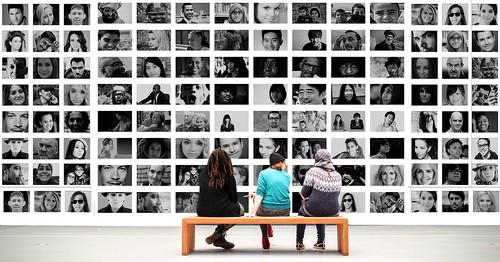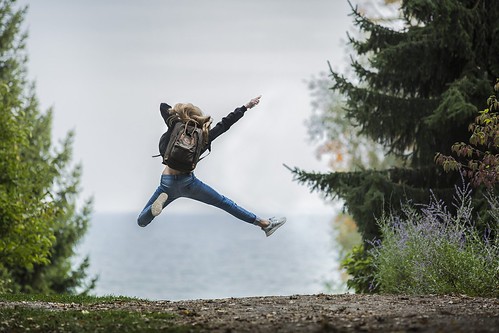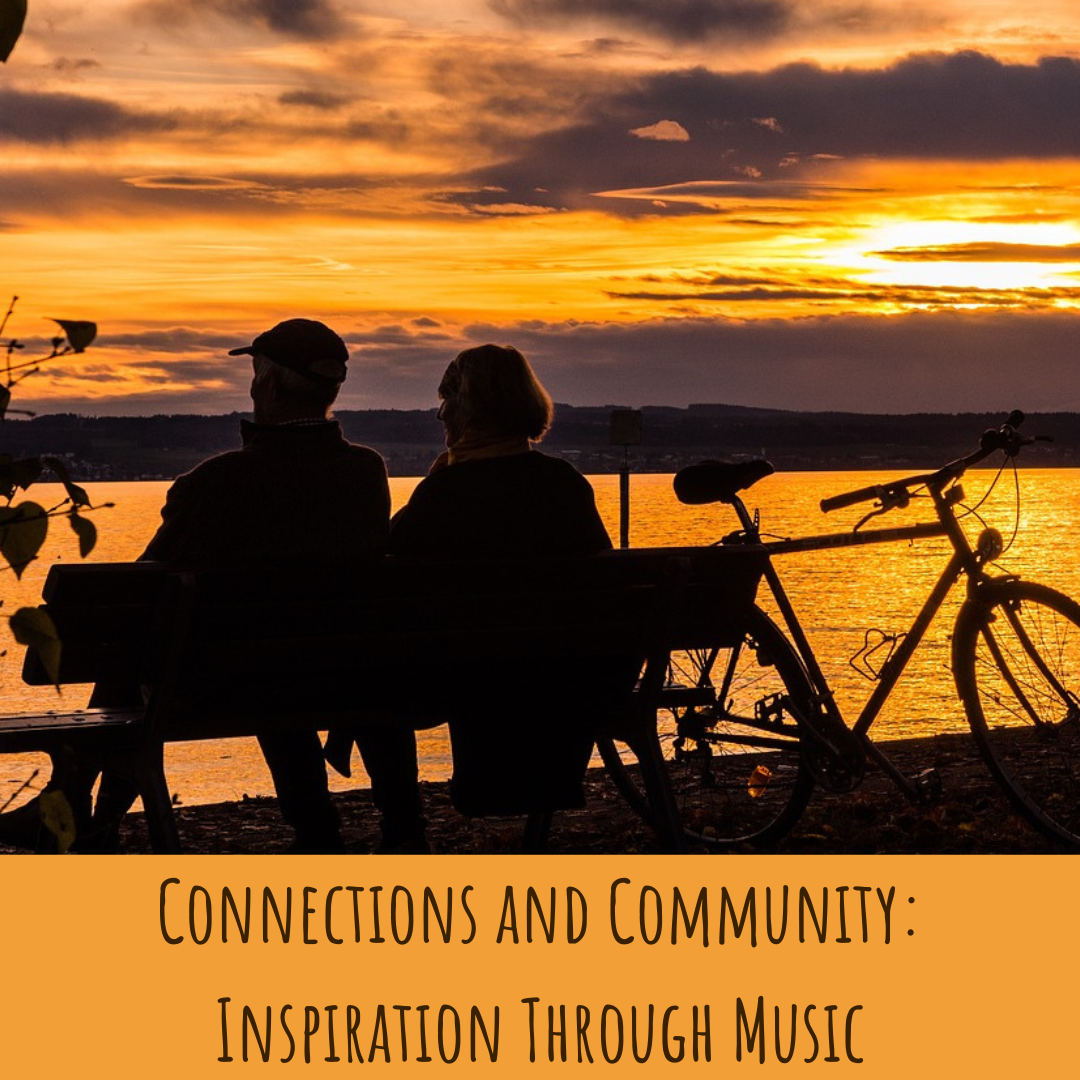Through the Eyes of an Educator: Connections
“Sometimes the smallest things take up the most room in your heart” - Winnie the Pooh
It’s been 16 months since the World Health Organization declared Covid-19 a pandemic—and what a weird 16 months it’s been. Regardless of where you live, we can surely say that 2020 and the first half of 2021 have been very different from any other years prior. Heaps of humans stayed home, people hunkered in their own spaces, and those traditional connections we’re so used to became the kinds that were quite literally unsafe for humanity. Yet, through it all, we’ve never stopped craving connection.
Perhaps the limitations only unearthed the truth of the matter: regardless of time, space, touch, indoor, outdoor, travel, or virtual, connections matter.

Just the other day, I messaged with a friend of mine on the other side of the world. We shared news with one another as I was headed off to bed and she readied to begin her day; she exclaimed, “worlds away, yet connected.” Somehow, it reminded me of a version of what millions of us experience all the time, and so many of us have found to be one of the many mantras of this past nearly year and a half. Perhaps, as the world tries to reimagine itself beyond the throes of this global pandemic, the time when the world stayed home can remind us to delve further into the meaning, value, and creation of connections.
Want to journey with me?
As the world shut down, perhaps we felt the loss of all kinds of connections. In the fleeting moments of our everydays, we may have multiple interactions with heaps of humans, yet the amount of deep connections is perhaps less. While each interaction matters and can quite literally shift our mood and enhance our gratitude, the wave to the postal worker, the smile at a stranger, the chat with the check out person at the market, or the one phone conversation with the credit card agent are not the ones about which we speak. When all seemed to be sucked away at once, the world pivoted—and perhaps, took stock of the true value and meaning of it all. Those deep connections are vital; whether we keep them going virtually or in person, they are still crucial to our well-being. How do you keep them going?

In positive psychology, there is a PERMA model. Developed by Martin Seligman, these are five components that, if pursued by an individual, are able to contribute to well-being. Positive emotions (P), engagement (E), positive relationships (R), meaning (M), and accomplishments (A) are crucial to well-being and are able to point us in the direction of flourishing and thriving. Yet doing the work isn’t easy. Creating, cultivating, and keeping those positive relationships active in our lives takes time, effort, and even courage. Sometimes, it even takes a giant leap of faith.
“Connection: The energy that exists between people when they feel seen, heard, and valued; when they can and receive without judgment; and when they derive sustenance and strength from the relationship” - Brené Brown

Meaningful connections take time to create. These are those relationships where there are no questions asked. These are two-way streets, where both people gain from being in that relationship. The value and meaning of the connection is paramount. Perhaps these are the people you call with both good news and that of the difficult kind. These are potentially made up of venting moments, therapy sessions, the I’m anxious about this moment, and OMG, this amazing thing just happened ones.
Whether it’s shared interests, vulnerability, learnings, or friendship, the meaningful connection goes far beyond the individual moment. We are hardwired for social connections; part of why this global pandemic has been challenging is that many of those traditional modes of social connections are the kinds that come with viral risks. Yet, while perhaps those external connections are the first to come to mind, the most vital one comes with ourselves. Remember us, those young ones who at those early ages giggled with glee at our favourite humans? We’re still here, craving those same connections—but the one that perhaps holds the most weight is that connection to ourselves. And when we remember to deeply connect with ourselves, to listen to our needs, to share our authentic selves, and take care of us—while it might be difficult—it does ultimately enrich our well-being.
As the world watches the extraordinary talent, grace, courage, and fierce competitors showcase their skills, talents, and struggles on the world stage, somehow, amidst all of the everything that’s going on in the world, this spectacle of sport continues to remind us of far more than sport. In Thomas Bach’s opening ceremony speech to those present and those at home, he reminded us all that “our Olympic community learned that we can address the many big challenges of our times only if we stand together.” Those at home and those in the stands feel a part of something bigger than ourselves. We’re here for the stories, the shared experience, the humans, and to support each other in whatever way is necessary and far beyond the mat, pool, track, or field. Communities are created by connection, and the idea of fostering and forging connections begins at a very early age. Just ask Molly Wright.
When this tiny seven year old has the brilliance and poise to remind us (in a TED talk) that connection begins in the womb and that a “game of peekaboo really can change the world,” perhaps we need to sit up and take notice. And, when the grownups in our lives aren’t helping us make those connections, or we’re actually now those grownups, we must take it upon ourselves to do just that. Connections matter. How will you continue to cultivate them in the next generation and in your own lives?
Six ways to cultivate connection
Join things
When you’re little, perhaps your parents signed you up for classes. Be it dance, cooking, taekwondo, chess, rugby, painting or a whole host of other things, they did it for you. Sure, maybe you asked or maybe they did it anyway, but you went, you joined things, and some of them you even enjoyed. When summer comes around, or you leave school behind, then what? Forging those connections is up to you, and joining things can help to plant those seeds of connection. Whether it’s the community center, religious organization, volunteer sign up, beach cleanup, auditing classes, hiking gathering, mastermind, language immersion, running club, or trying your hand at photography, join things. It may take joining a few things to find the one that clicks, but when you do, the connections fostered can quite literally enhance your well-being—and ultimately, change your life for the better.

Investigate stuff with respect, curiosity, and non-judgment
Countless connections have come from people who are interested and intrigued about something and dive in to find out more. In today’s world, there are so many ways to dig deeper that it pays to find out more. My friend Kelly is the biggest concert fan I know. In the pre-Covid world, she’d travel multiple times a year to various places to be front and center and be part of a musical show. Her concert compatriots head off to hither, thither, and yon to experience musical magic on multiple stages. Yet, when travel and thousand-person shows were no longer a thing, she needed a new way to keep that connection...enter streaming concerts. With a flick of a switch, her social media began to showcase all sorts of free virtual shows that anyone could tune into—and I imagine, like myself, others who might not have been a part of her original crew investigated, listened, and potentially found something else they loved. Her posts helped others find connections, as simple as that.
Sometimes a quick pivot and a ‘let’s check this out mindset’ can quite literally change the game.
Perhaps you’re interested in writing a detective story and you connect with a writing group who are learning just like you. Perhaps climate change is a huge passion of yours and you do your research to find an activist organization where you really feel welcome and feel that you can make a difference. Or, perhaps, you find out that a child in a local elementary school can’t afford her lunch and you gather the community to be sure that doesn’t happen again. Your shared interests can create connections...and those initial contacts can, with time, effort, and energy, lead to far deeper connections with interesting humans.

Lead with an open mind
How will we learn if we don’t ask the questions? How can we grow as individuals if we don’t connect with people different from ourselves? Maybe you have a next door neighbor whose culture is different from your own. Perhaps your friend’s parents celebrate different holidays, or maybe your teacher told you about an organization he thinks might inspire you. Sometimes we have to head outside ourselves to do things differently. It can be as simple as checking out a circus school class where you can try your hand at juggling. Perhaps you’ve been in a club for awhile, but finally decide to take the next step and run for office, or have decided that even though no one you know has a shared interest, you want to give something a whirl—and that’s one-hundred percent enough. It is altogether possible that your open mind will take you on an adventure of constant connection.

Be afraid and do it anyway
On my yearly voyage to summer camp, I think I said, “take me home, no I don’t want to go,” about a zillion times. Label it anxiety or fear, no matter, the doubt, discomfort, and dread was there in that car for the entire ride. Yet every year, within five minutes of getting out of the car, I was home. The counselors, campers, friends, noise, fresh air, summer goodness - all of it enveloped me into a community with whom, three decades later, I’m still connected. Sometimes, in order to expand that comfort zone, we have to do things while we’re afraid. Sometimes, overcoming that fear can actually drive us towards something wonderful. So, if heading to camp, performing in your first play, speaking in public, clicking yes to that hiking meetup, or gaining that community of connection in that new environment that still makes your hands sweat each time you enter...be afraid, but do it anyway. I’m glad we didn’t turn that car around each summer, because today, many of those summer humans are the ones with whom I hold the deepest connections.

Extend a hand
In today’s world, there are many ways to extend a hand. Whether you’re picking up groceries, sending a text, offering to babysit, volunteer, or offer help in person or virtually, it’s possible. If you’re a little one in the world, you can do it, too. Perhaps it’s helping a neighbor carry their packages, taking a puppy for a walk, or donating your toys. Maybe it’s volunteering with the grownups in an organization that provides help for others—and brings you great joy to be connected with such amazing humans. Maybe it’s remembering that your best friend loves elephants, and no matter where you go, you find something with an elephant on it and bring it back to them. And, if you’re old enough, perhaps it’s stepping up to help a community or person in need, or sharing your skills with those less fortunate, or showing up for a friend because it’s the right thing to do. Each time we extend a hand, it feels good for all involved—and in each instance, helps to facilitate those stronger relationships.

Please click the photo below for a collection of my Through the Eyes of an Educator columns:
Stacey Ebert, our Educational Travels Editor, is a traveler at heart who met her Australian-born husband while on a trip in New Zealand. Stacey was an extracurricular advisor and taught history in a Long Island public high school for over fifteen years, enjoying both the formal and informal educational practices. After a one year 'round the world honeymoon, travel and its many gifts changed her perspective. She has since left the educational world to focus on writing and travel. She is energetic and enthusiastic about long term travel, finding what makes you happy and making the leap. In her spare time she is an event planner, yogi, dark chocolate lover, and spends as much time as possible with her toes in the sand.
Check out her website at thegiftoftravel.wordpress.com for more of her travel musings.





















